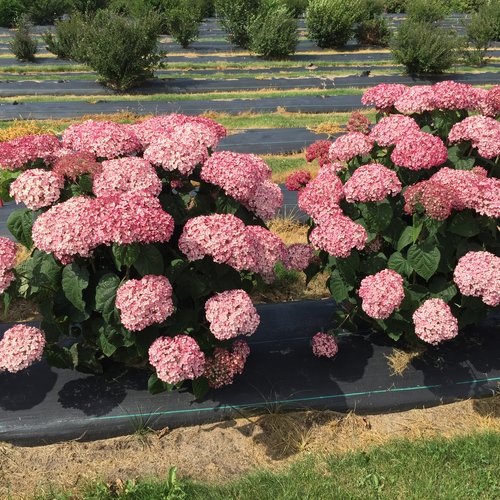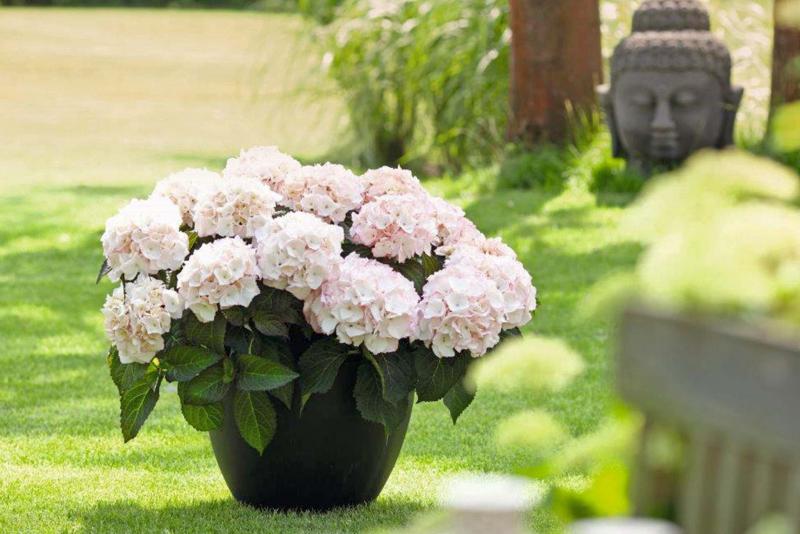Blush Hydrangea: The Ultimate Guide To Growing And Caring For These Gorgeous Blooms
Blush hydrangeas are a beautiful and versatile flowering shrub that can add a touch of elegance to any garden. They are known for their large, showy blooms that can range in color from pale pink to deep purple. Blush hydrangeas are relatively easy to care for and can thrive in a variety of conditions.
In this blog post, we will provide you with an ultimate guide to growing and caring for blush hydrangeas. We will cover everything from choosing the right location to planting and fertilizing. We will also provide tips on how to prevent pests and diseases.
Choosing the Right Location
The first step in growing blush hydrangeas is to choose the right location. Blush hydrangeas prefer full sun to partial shade. They will tolerate full sun in cooler climates, but they may need some afternoon shade in warmer climates. Blush hydrangeas also need well-drained soil. If your soil is heavy clay, you may need to amend it with sand or compost.
Planting Blush Hydrangeas
Once you have chosen the right location, you can plant your blush hydrangeas. Blush hydrangeas should be planted in the spring or fall. When planting, dig a hole that is twice as wide and as deep as the root ball of the plant. Backfill the hole with soil, being careful not to bury the crown of the plant. Water the plant well after planting.
Fertilizing Blush Hydrangeas
Blush hydrangeas need to be fertilized regularly to produce their best blooms. You can fertilize your blush hydrangeas with a balanced fertilizer, such as 10-10-10, in the spring and fall. You can also use a fertilizer specifically formulated for hydrangeas. Follow the directions on the fertilizer label for the best results.
Watering Blush Hydrangeas
Blush hydrangeas need to be watered regularly, especially during the first year after planting. Water your blush hydrangeas deeply once a week. If the weather is hot and dry, you may need to water more often.
Pests and Diseases
Blush hydrangeas are relatively resistant to pests and diseases. However, they can be susceptible to aphids, scale, and leaf spot. If you see any pests or diseases on your blush hydrangeas, treat them immediately with an appropriate pesticide or fungicide.
Overwintering Blush Hydrangeas
In colder climates, blush hydrangeas may need to be protected from the cold. You can do this by mulching the plant with a layer of leaves or straw. You may also need to cover the plant with a burlap sack or other protective covering.
Enjoying Your Blush Hydrangeas
With proper care, your blush hydrangeas will reward you with beautiful blooms for many years to come. Enjoy!
FAQ of blush hydrangea
- What is a blush hydrangea?
A blush hydrangea is a type of hydrangea that produces flowers in a range of shades of pink, from light blush to deep rose. The color of the flowers can vary depending on the pH of the soil, with more acidic soil producing darker flowers. Blush hydrangeas are relatively easy to care for and can be grown in a variety of climates.
- Where can I plant a blush hydrangea?
Blush hydrangeas prefer full sun in cooler climates, but can tolerate partial shade in warmer climates. They need well-drained soil that is rich in organic matter. Blush hydrangeas are not drought-tolerant, so they should be watered regularly, especially during hot, dry weather.
- How do I care for a blush hydrangea?
In addition to regular watering, blush hydrangeas should be fertilized in the spring with a balanced fertilizer. They may also need to be pruned in the spring to remove dead or damaged branches. Blush hydrangeas are relatively pest- and disease-resistant, but they may be susceptible to powdery mildew if the leaves are wet for long periods of time.
- How do I get my blush hydrangea to bloom?
Blush hydrangeas bloom on old wood, so it is important to prune them in the spring before the new growth emerges. If you prune them too late in the season, you may cut off the flower buds. Blush hydrangeas also need a certain amount of cold weather to trigger flowering. In warmer climates, you may need to provide them with some artificial chilling by storing them in a cool, dark place for a few weeks before planting.
- How long do blush hydrangeas live?
Blush hydrangeas can live for many years with proper care. With regular watering, fertilizing, and pruning, they can be a beautiful addition to your landscape for many years to come.
Image of blush hydrangea
5 images of blush hydrangea from Pinterest:
- A large blush hydrangea bush in full bloom, with the flowers ranging in color from light pink to deep rose.
- A close-up of a single blush hydrangea flower, showing the delicate petals and the intricate stamen.

- A bouquet of blush hydrangea flowers, arranged in a vase. The flowers are a beautiful mix of light pink, deep rose, and white.

- A blush hydrangea plant in a garden, surrounded by other flowers and greenery. The plant is in full bloom, and the flowers are a beautiful contrast to the green leaves.

- A blush hydrangea potted plant on a patio, with the flowers cascading over the sides of the pot. The plant is in full bloom, and the flowers are a beautiful addition to the patio.

Post a Comment for "Blush Hydrangea: The Ultimate Guide To Growing And Caring For These Gorgeous Blooms"